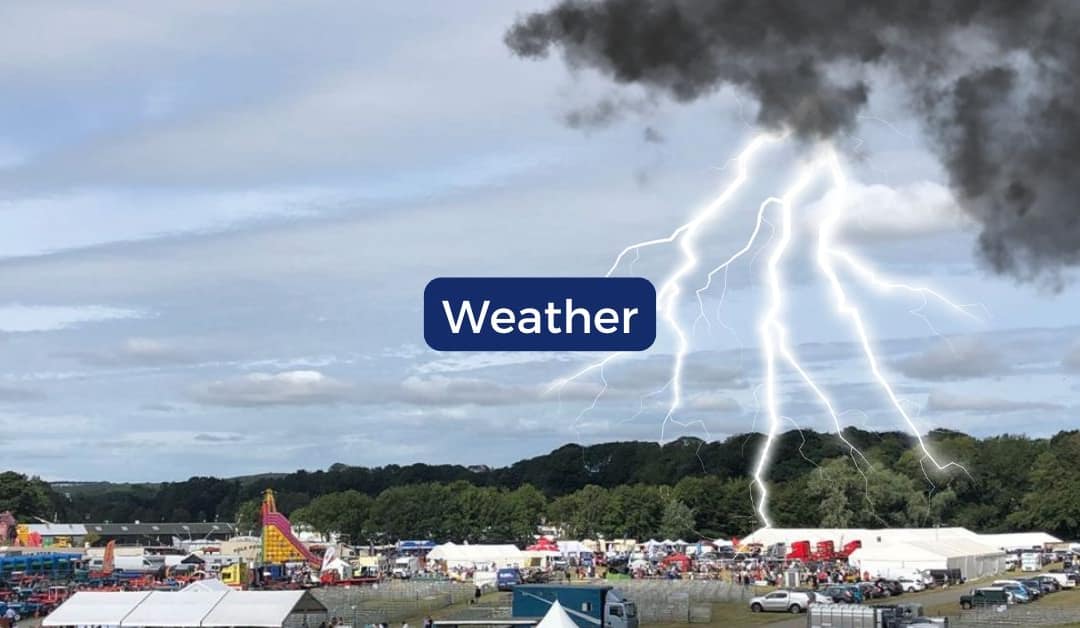We’ve learned many things working in outdoor events, though if there’s one lesson that stays tattooed in the mind, it’s this: weather doesn’t care how hard you planned. It doesn’t care about ticket sales, headliners, suppliers, months of logistics or how much pressure sits on your shoulders as the event manager.
Weather makes its own decisions.
And here, in Scotland, it doesn’t just arrive quietly either. We’ve stood on build sites where the sky changed in the time it takes to sign off a ground plan. Clear one minute, then a wind that crawls across the grass like it’s checking your rigging for weak spots. Rain that feels like it’s been waiting for the exact moment your marquee skin is halfway rolled out.
Remembering one particular build just outside Edinburgh, early summer, bright blue sky, crew fuelled with morning optimism. We’d barely finished staking out the first footprint when the wind warnings shifted. The kind of shift where every experienced site manager quietly pauses mid-coffee.
“Right,” someone muttered. “Here we go.”
We didn’t panic. We didn’t rush. We’d already built the plan assuming nature would test us. And that is where resilience lives, not in the moment the storm hits, but weeks earlier when you design your build around the assumption it will.
We reinforced, rescheduled, communicated. We fastened ballast before anyone needed to ask. We paused the skinning until the gust window dipped. We worked with the elements, not against them.
The event opened on time. The audience never knew what almost happened. But our team will remember it forever. Not because it was dramatic, but because that’s what good planning feels like when it works, calm in a moment that could have been chaos.
Weather-proofing isn’t about fighting nature. It’s about anticipating her character.
- It’s knowing how a field holds water after a sudden downpour.
- It’s understanding how wind behaves differently near a valley, a sea wall, or the edges of a city.
- It’s the quiet confidence of engineers who can read a tension cable like a musician reads a score.
- It’s a crew who understand why extra ballast isn’t a nice-to-have, it’s a lifeline.
And it’s the conversations, the ones we have on-site, at SAG meetings (Safety Advisory Group), on the phone when a supplier says, “Forecast’s shifting, what’s your plan B?”
We don’t just bring structures; we bring experience. Shared, collective, earned the only way that matters: by standing outside in the kind of weather that would send normal people running for the nearest door.
So here’s my invitation, if you’ve faced the wind and come out the other side, tell the story.
Share the day you beat the elements, or the day the elements taught you something you’ll never forget.
Because every story makes our industry stronger, and every event season gives us a new chapter. And in Scotland, we’ve still got plenty of weather left to learn from.

